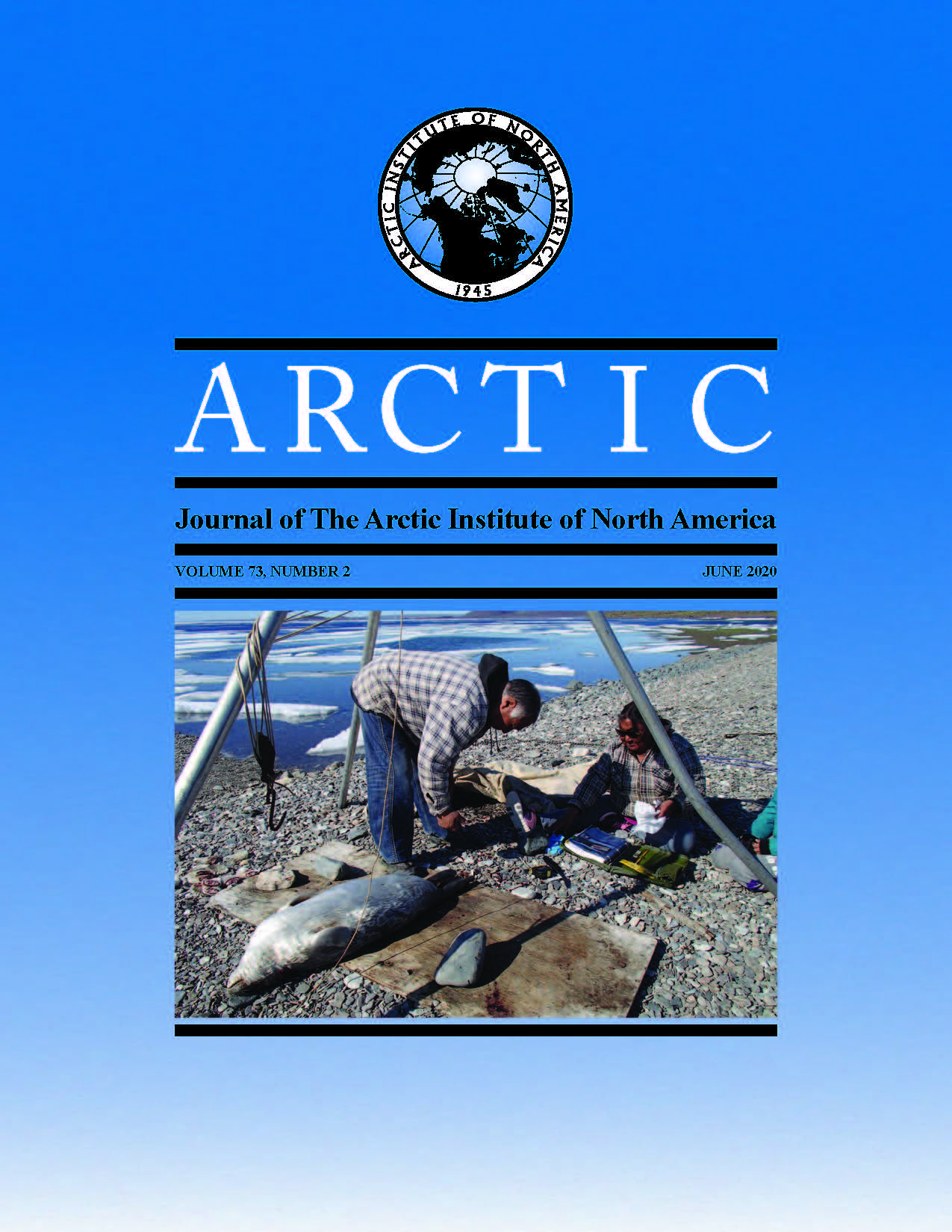Long-term, Harvest-based Monitoring of Ringed Seal Body Condition and Reproduction in Canada’s Western Arctic: An Update through 2019 + Supplementary Appendix 1 (See Article Tools)
DOI:
https://doi.org/10.14430/arctic70428Ключевые слова:
ringed seal; sea ice; ovulation; ovulation failure; body condition; blubber depth; percent pups; Amundsen Gulf;Аннотация
The circumpolar Arctic ringed seal (Pusa hispida) occupies its fast-ice breeding habitat for four to five months during winter and the pack ice or open water of adjacent areas for the rest of the year. From 1971 – 78 and 1992 – 2019, we sampled approximately 100 ringed seals annually from western Prince Albert Sound (WPAS), the prime ringed seal fast-ice breeding habitat in Canada’s Western Arctic, adjacent to primary overwinter foraging habitat in eastern Amundsen Gulf (EAG). As our metric of body condition, we measured ventral blubber depth corrected for body size. As our metrics of reproduction, we measured the annual ovulation rate of multiparous females and percent pups in the open-water harvest. We examined these biological parameters in relation to the winter Arctic Oscillation Index (winAOI) and the timing of sea ice clearance in EAG in spring. There were no significant effects of age or sample month (June or July) on adult blubber depth, but significant sex and year effects and, in females, ovulation status effects. Across the series, as we have observed previously through 2011, there was a sustained temporal declining trend in blubber depth in adults of both sexes. There was no temporal trend in residual blubber depth, no correlation between blubber depth and sea ice clearance date in EAG, and a quasi-cyclic pattern in blubber depth that tracked some of the phases of the winAOI. Annual ovulation rates were mainly in the 80% – 100% range and correlated with percent pups in the open harvest in the same year. Three (1974, 2005, 2012) of the 36 y experienced reproductive failures, when over 50% of the multiparous females failed to ovulate. In each case, ovulation rates returned to normal within 1 – 3 y. Low annual ovulation rates were correlated with late sea ice clearance in EAG in spring, with two widespread ovulation failure events taking place in years when spring sea ice clearance was delayed by five to six weeks. The most recent ovulation failure (2012) differed in that it came in an average ice year but at the end of a six-year sequence of negative residual mean blubber depths. Earlier spring sea ice clearance in WPAS, based on the observed rate of 3.8 d per decade, would on average not result in the physical loss of sea ice for pupping in this core habitat before 2140. The mechanisms involved in the sustained declining temporal trend in body condition, linkage with some phases of the winAOI, and the temporary but episodic failures of ovulation are complex and not fully explained by either the timing of sea ice clearance or the winAOI. Until the complex mix of factors, pressures and responses are understood, our ability to predict the impacts of a changing climate on ringed seals will remain limited.


